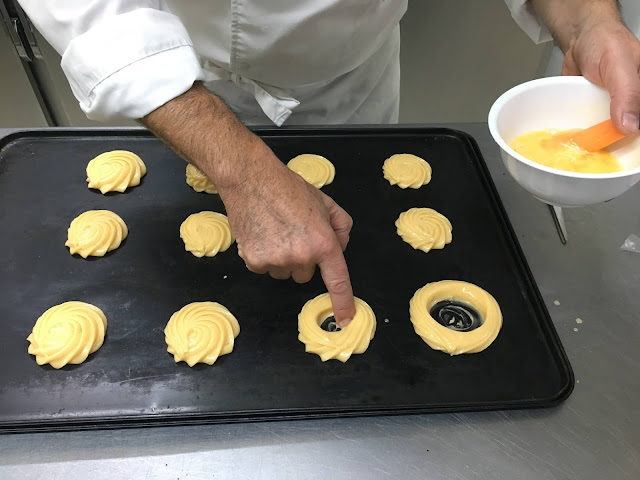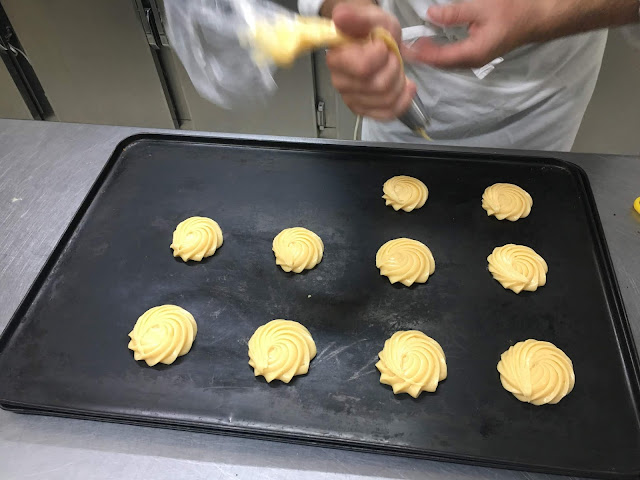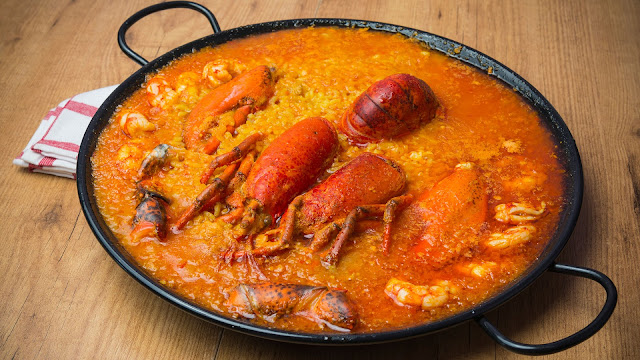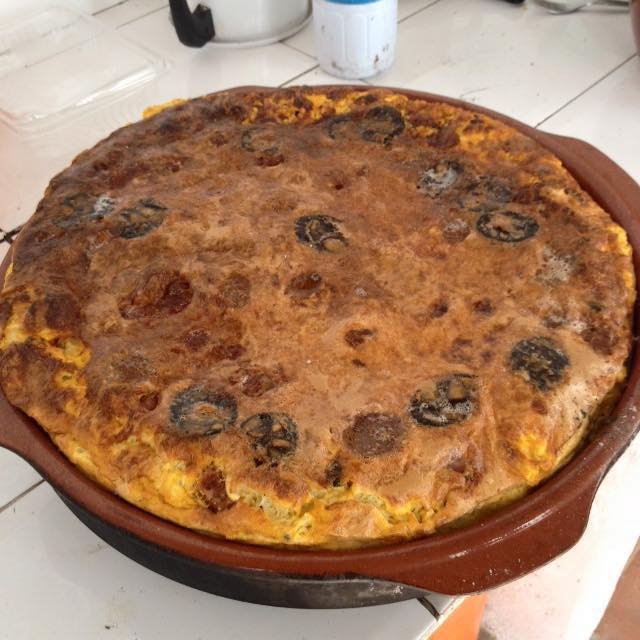The “almojábana” is a cake or pastry, a kind of cruller, traditional in the gastronomy of Elche and the South of Alicante province, and also in a few cities and villages in Murcia and Valencia. In the past it was typical to prepare them in certain celebrations, but now it´s possible to buy all the year long.
It´s made with a mass prepared with wheat flour, egss, and depending on the pastry chef olive oil, sunflower oil, lard or butter and milk. After baking the cake is wet with syrup (prepared with sugar or honey). In spite of this variability in the recipe, its flavour is always delicious, with a smooth and tender texture. It´s curious that with so few ingredients and so common, the result is so fine and so popular.
 |
| Baking almojábanas |
It is said that almojábenas have Arab origin, more than 500 years ago, because it seems that the word comes from “almuyabbana” (made with cheesse, in old hispanic arab). In the thirteenth and fifth centuries, there are old written references about “almojabanas”, as a cake made of cheese and flour. This recipe traveled to South America long time ago, because nowadays there are almojábanas with these ingredients in Colombia and Puerto Rico.
 |
| The secret of the hole |
Over time somehow the recipe changed in Spain, even there isn´t a unique recipe, and it´s posssible to find different pastries with this name. Maybe the exact recipe was changing throughout the centuries. Or maybe was lost totally, and people called new recipes with this name, that in someway remained in the collective memory. Anyway, is suggestive to taste “almojábanas”, trying to imagine how this name was passing down from generation to generation.
Pictures courtesy of Confitería Castell








